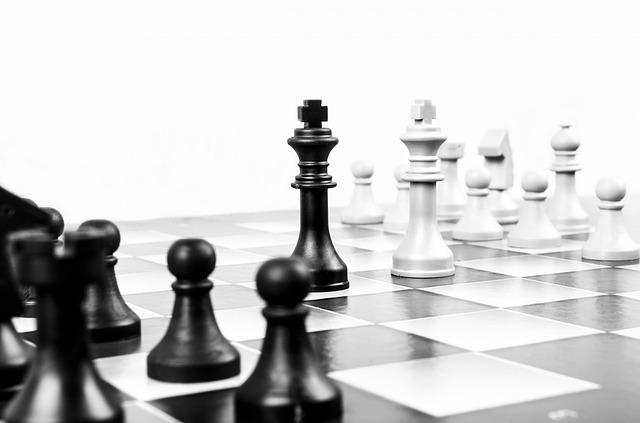
Arrangements between sovereign states fall into one of two broad categories (putting colonialism and suzerainty aside): hegemony and balance of power. Is Australia facing a succession of hegemons or a world in which there is no hegemon and the great powers seek a balance of power?
Ian Clark suggests that, more than possessing military power and economic weight, being a hegemon ‘is a status bestowed by others, and rests on recognition by them’. Foremost among ‘the attributes of the putative hegemon’ are ‘the perceptions and responses’ of the other states. International leadership amounts to hegemony, ‘when foreign elites acknowledge the leader’s vision of international order and internalise it as their own’.
On that basis, the US has long been a hegemon. The US designed the postwar international system. The liberal values and market capitalism that underpin the international order have been the shared and unquestioned assumptions among political elites in Europe, Australia and elsewhere. The liberal international order’s most enthusiastic promoters have often been outside America, although the hegemonic blueprint was initially expounded internally in key documents like NSC 68. That document described US policy as ‘designed to foster a world environment in which the American system can survive and flourish’.
The Australian government’s 2017 foreign policy white paper shows strong alignment with what have been US international values. President Barack Obama’s 2015 national security strategy expressed the belief that ‘sustained American leadership is essential to a rules-based international order that promotes global security and prosperity’ and the conviction that the ‘question is never whether America should lead’ but how it leads. Those sentiments permeate the white paper. The legitimacy of US hegemony is in the bone marrow of Australia’s political elites.
Canberra’s strong identification with US hegemony explains the widespread consternation at the US’s waning status. Over and above security norms and trade rules concerns, there’s a visceral dread that a Chinese hegemony would require a radical transformation in Australia’s political zeitgeist and the adoption of an unpalatable set of new governing concepts. Traditional political language wouldn’t be able to provide a coherent account of the new international environment. There would no longer be an assumption that liberal democratic values and human rights are universal, or that markets should necessarily operate with minimal government interference.
The rate of decay of the US’s hegemonic status is accelerating. Not its economy or its military power, just the hegemonic leadership it offers through a set of values and behavioural norms with which the elites in other large economies can align themselves. Maybe it started under President George W. Bush, but under President Donald Trump the multilateral liberal consensus that legitimised US hegemony is quickly disappearing.
Trump has abandoned the Paris climate and Iran nuclear agreements and incited a trade war. He hasn’t just failed to condemn heinous human rights abuses, and valorised illiberal autocrats in Vladimir Putin, Xi Jinping and Kim Jong-un, but seems to have implicitly acknowledged Russia’s annexation of Crimea. When that’s added to the evident domestic erosion of liberal values, the US is exposed as a nation that bullies and no longer leads by example.
But fears of China becoming a hegemon are unrealistic. Even in decline, the US will persist as the most significant single economy and the major military power for many decades to come. In addition, the European Union will remain an important global economic and security player.
Europe won’t establish the same relationship with China that it had with America. Transatlantic relations will remain important, but Europe will no longer accept US hegemony. It will seek to balance US power through closer economic and security relations with Asia. The growing closeness in the strategic and economic interests of China and Russia is forging a large geographic area in Eurasia that’s increasingly impervious to US influence.
As hegemonic bonds loosen, Europe will try to balance the US with China and offset China with the US and Russia; Russia will try to balance the US with China and check China with Europe; and China will try to balance the US with Europe and Russia. In this situation, states like Turkey, Nigeria, Japan, Canada, Iran and, in particular, India will manoeuvre to advantage.
In the face of such competitors, China will never rise to the level of postwar dominance that the US achieved under the banner of leader of the free world when it was able unilaterally to dictate the rules of international interaction. Nevertheless, in some regions China might approximate a hegemon. But the US will remain the primary factor in the strategic calculations of all other great powers.
As US hegemony recedes, Australia will be left facing a world of balance-of-power arrangements, but one unlike anything seen before. Yet Australia need not fear being forced to kowtow to China or to become the antipodean version of socialism with Chinese characteristics. Nor will it need to become a militarised continental fortress primed to repel assaults by a Chinese suzerain seeking tributary states. The emerging international environment will likely be in some form of equilibrium without a smothering hegemon.
Small, agile and capable states like Australia will have to move among great-power alignments to seek their advantage. Positing Australia’s quandary as choosing between China and the US is simplistic. Australia need not fear the passing of the hegemon if it can find the statesmen and diplomats who are alive to new opportunities and unafraid of China’s shadow.